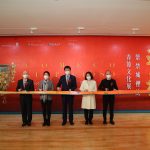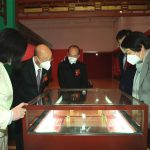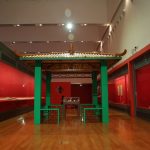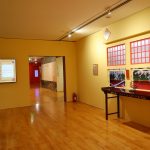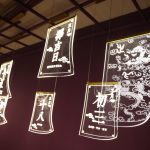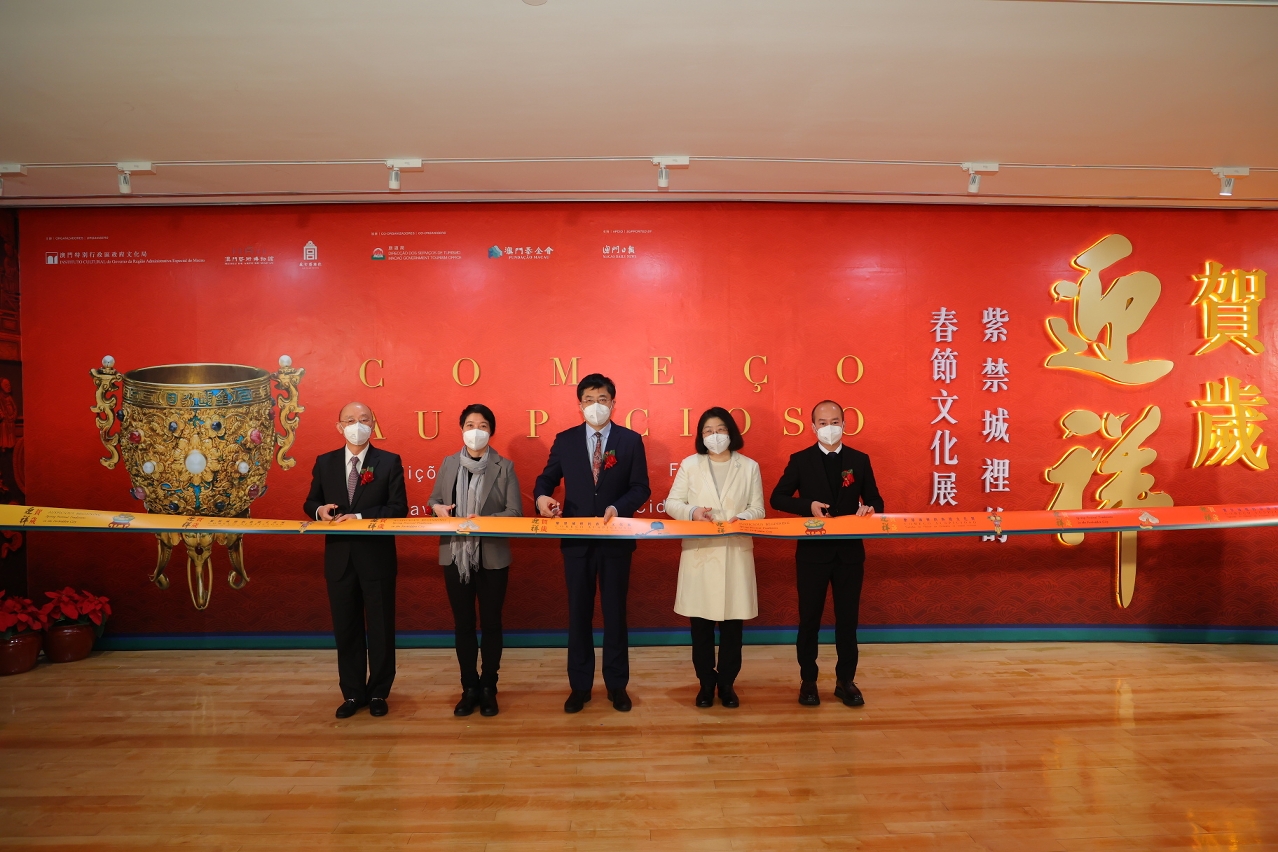 Group photo of officiating guests
Group photo of officiating guests
The ‘Auspicious Beginning: Spring Festival Traditions in the Forbidden City’ exhibition, jointly organised by the Macao Museum of Art (MAM) under the auspices of the Cultural Affairs Bureau (IC) and the Palace Museum, co-organised by the Macao Government Tourism Office and the Macao Foundation and supported by Macao Daily News, was inaugurated at the special exhibition gallery on the fourth floor of MAM at 6:30 p.m. today,16 December 2022. The opening ceremony was officiated by the Director of the Department of Publicity and Culture of the Liaison Office of the Central People's Government in the Macao SAR, Wan Sucheng; the President of the Cultural Affairs Bureau, Leong Wai Man; Deputy Director of the Palace Museum, Zhao Guoying; Director of the Macao Daily News, Lok Po; Head of Licensing and Inspection Department, Chong Cheok Ip.
The Spring Festival is a major traditional festival in China. To enrich Macao people’s understanding of the Lunar New Year culture and spice up the happy and peaceful atmosphere, MAM and the Palace Museum are specially presenting the festive art exhibition ‘Auspicious Beginning: Spring Festival Traditions in the Forbidden City’ to residents and tourists alike. Featuring around 120 pieces (sets) of artefacts and multimedia items, this informative and fun-packed exhibition showcases the Lunar New Year traditions and customs of the Qing imperial palace from the aspects of worship rituals, family activities, court affairs, and recreations in a novel way.
This exhibition is showcasing various rare items from the Palace Museum’s collections. Visitors can admire the New Year’s Painting, a masterpiece created by top figures of the time to celebrate the Chinese New Year, featuring painting and calligraphy by top scorers of the imperial examination Qian Weicheng and Yu Minzhong and inscription by Emperor Qianlong. From the painting Ice Games, which depicts the scene of Emperor Qianlong watching the performance ‘spinning dragons shooting the sky-ball’ on the Laba Festival (the 8th day of the 12th lunar month), visitors can learn about ice games as a state military and recreational activity during the Ming and Qing dynasties. The exhibition will run until 5 March next year, spanning across several Chinese traditional festivals including the Winter Solstice, Spring Festival and Lantern Festival, and allowing visitors to appreciate the quintessential Chinese culture through the precious artefacts from the Palace Museum and enjoy the Lunar New Year amid the traditional art of the festival.
In addition, to raise the public’s interest in the exhibition, an interactive educational area is provided and free knowledge booklets and postcards are available at the venue, and an array of exciting extended activities will be progressively held during the exhibition period, including lectures by Palace Museum experts, docent tours for the general public, guided tours via QR codes, lessons on the Palace Museum, workshops, online exhibitions, and prize games. MAM is open from 10 am to 7 pm (no entry after 6:30 pm) daily including public holidays and is closed on Mondays. Admission is free. For more information about the exhibition and extended activities, please visit the MAM’s official website at www.MAM.gov.mo.
IC has been strictly following the anti-epidemic guidelines of the Health Bureau and implementing appropriate arrangements for cultural activities. In cooperation with the epidemic prevention efforts of the SAR Government, all visitors must also wear masks, undergo body temperature checks, present their Macao Health Code of the day and cooperate with the anti-epidemic and crowd control measures onsite.


